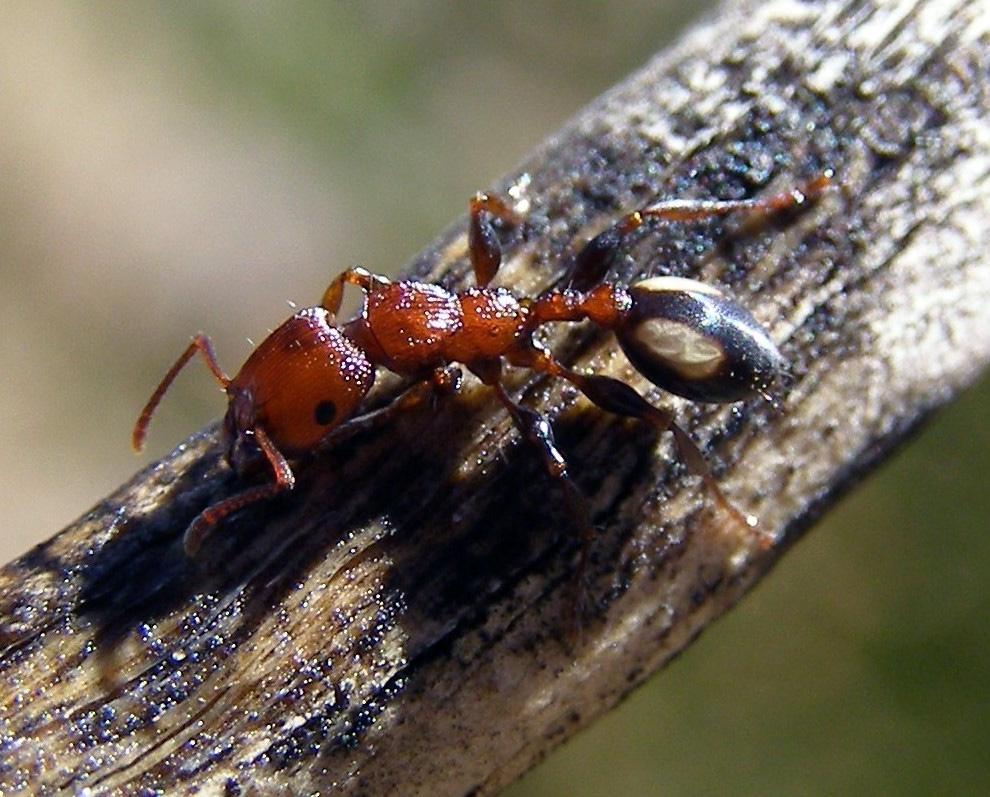Plants vs ants: who will survive the climate change challenge?
We are increasingly observing the impact of climate change on biodiversity, but will ants or plants win out?
Climate change is affecting our native plants and animals. Warmer, dryer weather is causing a change in our natural and production landscapes, with some species becoming more common, whilst others getting rarer. But how will groups of species, or communities, change in the future, and will they change in broadly similar ways?
New research published in the journal Diversity and Distributions, suggests that the effects of climate change may be seen in insect communities long before changes in vegetation, due to their greater sensitivity to the environment and climate.
The models the research team developed showed that ants were up to 7.5 times more sensitive to projected climate change than plants. This uneven response suggests that the tight linkages that we see between these groups might be disrupted by climate change. The next step is to unravel what impacts the loss of these linkages might have on our native ecosystems.
“Ants and plants have a very close relationship and often show strong inter-dependent bonds,” says lead author Dr Stefan Caddy-Retalic, who recently completed his PhD in the University of Adelaide’s School of Biological Sciences.
“For example, plants may produce food for ants that protect that plant from herbivores.
Dr Caddy-Retalic explained the importance of the ecological bonds between plants and ants.
“These relationships are important for our environment. Plants produce biomass through photosynthesis.
“Ants can eat plants, but also carry out crucial roles in nutrient cycling and seed dispersal, and some species are important predators.
“These links between all organisms contribute to how an ecosystem functions.
“A healthy ecosystem will usually contain many species of ants that perform different roles.

Podomyrma adelaidae, one of the ant species sampled as a part of this study, and likely to be very sensitive to climate change.
Dr Caddy-Retalic says that under climate change, we expect that many species will have to migrate to new areas to survive.
“Because of the tight links we see, ant species shifts would lead to a disruption in these essential services, and could lead to a catastrophic knock-on effect for other organisms including plants and larger animals.”
The research team, which also included CSIRO, Charles Darwin University and University of Sydney, conducted surveys of the plant and ant communities at a series of reserves in South Australia. Surveys ranged from the temperate to arid zone, stretching in a line from Deep Creek at the southern Fleurieu Peninsula, through the Mt Lofty ranges, up to Warraweena in the northern Flinders Ranges.
Researchers combined data on how the species at those locations changed with data on environmental and climate variations to build a new type of mathematical model that predicts how climate change is likely to affect those communities.
“We recorded a total of 363 plant and 227 ant species. Two-thirds of those ants (75 species) were new to science, underlining how much of Australia’s biodiversity is yet to be discovered,” says Dr Caddy-Retalic.
Chair of Conservation Biology Professor Andrew Lowe is increasingly observing the impact that climate change is having on our native plants and animals.
“Our observations of the different climate sensitivity of plant and ant communities are highly likely to occur in many other global ecosystems,” Professor Lowe says.
“The modelling approach we have developed provides a new way to help predict how ecosystems are likely to respond to environmental disturbance, including climate change in the future, and should be implemented more broadly to better manage our biodiversity and ecosystem service assets.”
About this article
This article was written by Stefan Caddy-Retalic, Robyn Mills and Andrew Lowe, based on research publication below. It was originally published on the website ‘Biodiversity Revolution - Thoughts from the vanguard of biodiversity research’.
Further reading
Caddy-Retalic S, Hoffmann BD, Guerin GR, Andersen AN, Wardle GW, McInerney FA, Lowe AJ. Plant and ant assemblages predicted to decouple under climate change. Diversity and Distributions.
